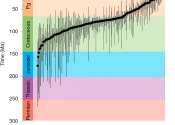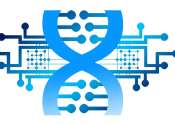In biology, mutations are changes to the nucleotide sequence of the genetic material of an organism. Mutations can be caused by copying errors in the genetic material during cell division, by exposure to ultraviolet or ionizing radiation, chemical mutagens, or viruses, or can be induced by the organism itself, by cellular processes such as hypermutation. In multicellular organisms with dedicated reproductive cells, mutations can be subdivided into germ line mutations, which can be passed on to descendants through the reproductive cells, and somatic mutations, which involve cells outside the dedicated reproductive group and which are not usually transmitted to descendants. If the organism can reproduce asexually through mechanisms such as cuttings or budding the distinction can become blurred. For example, plants can sometimes transmit somatic mutations to their descendants asexually or sexually where flower buds develop in somatically mutated parts of plants. A new mutation that was not inherited from either parent is called a de novo mutation. The source of the mutation is unrelated to the consequence, although the consequences are related to which cells were mutated.
Mutations create variation within the gene pool. Less favorable (or deleterious) mutations can be reduced in frequency in the gene pool by natural selection, while more favorable (beneficial or advantageous) mutations may accumulate and result in adaptive evolutionary changes. For example, a butterfly may produce offspring with new mutations. The majority of these mutations will have no effect; but one might change the color of one of the butterfly's offspring, making it harder (or easier) for predators to see. If this color change is advantageous, the chance of this butterfly surviving and producing its own offspring are a little better, and over time the number of butterflies with this mutation may form a larger percentage of the population.
Neutral mutations are defined as mutations whose effects do not influence the fitness of an individual. These can accumulate over time due to genetic drift. It is believed that the overwhelming majority of mutations have no significant effect on an organism's fitness. Also, DNA repair mechanisms are able to mend most changes before they become permanent mutations, and many organisms have mechanisms for eliminating otherwise permanently mutated somatic cells.
Mutation is generally accepted by the scientific community as the mechanism upon which natural selection acts, providing the advantageous new traits that survive and multiply in offspring or disadvantageous traits that die out with weaker organisms.









